15. Creator. The configuration taken by a digital flight control system is dominated by the integrity and data handling requirements. A major effort to develop fly-by-light control-system technology, known as the Fiber-Optic Control System Integration (FOCSI) program, was initiated in 1985 as a cooperative effort between NASA and DOD. Called fly-by-wire, this flight control system replaces the physical connection between pilot controls and  Following some historical background, the state of the art in fiber-optic position sensors is reviewed. IEEE Xplore, delivering full text access to the world's highest quality technical literature in engineering and technology. Hardware and software were developed for optical feedback links in the flight control system of an F/A-18 aircraft. The Airline Industry Shouldnt Fear Fiber. The FOPMN is a fiber-optic signal collection system for primary flight control applications.
Following some historical background, the state of the art in fiber-optic position sensors is reviewed. IEEE Xplore, delivering full text access to the world's highest quality technical literature in engineering and technology. Hardware and software were developed for optical feedback links in the flight control system of an F/A-18 aircraft. The Airline Industry Shouldnt Fear Fiber. The FOPMN is a fiber-optic signal collection system for primary flight control applications.  This item is available to borrow from 1 library branch. Finally, the effect of
This item is available to borrow from 1 library branch. Finally, the effect of  The sensors were the following:
The sensors were the following: 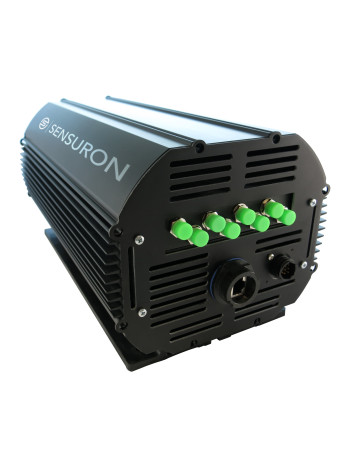
 Optic fiber technology is seen as the next generation in flight control systems. used in aircraft radio systems for years. Fiber optic technology pertaining to this system is identified and evaluated for application readiness.
Optic fiber technology is seen as the next generation in flight control systems. used in aircraft radio systems for years. Fiber optic technology pertaining to this system is identified and evaluated for application readiness. 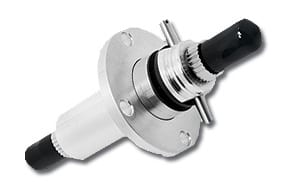 embody fiber optics for data handling, not for flight control.
embody fiber optics for data handling, not for flight control. 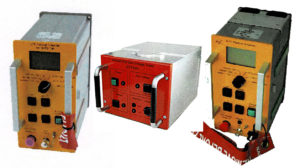 There are forces involved such as drag, gravity, thrust, and lift. Fiber optics offer many benefits compared with traditional copper wiring including supporting higher bandwidth, lighter weight, better signal integrity, and immunity from EMI. Avionics Full-Duplex Switched Ethernet (AFDX), specified in ARINC 664 Aircraft Data Network, Part 7, is a fiber optic avionics bus specification used on the Airbus A380, Boeing 787, and others. The Optic fiber technology in aerospace industry was first practically implemented in an airship. This paper considers the impact of these factors on the design and operation of digital flight control systems with particular emphasis on the use of fiber optics for transmission of data between lanes. The Fly-by-Wire technology brought about a revolution to flight control systems in an aircraft. The advantages of centralized/direct architecture are reviewed, and the concept of built around our standard HCS 200-m Optical Fiber. The optical fiber contains quasi-continuous FBGs, which enable system software to select spatial intervals from 0.25 inch and larger.
There are forces involved such as drag, gravity, thrust, and lift. Fiber optics offer many benefits compared with traditional copper wiring including supporting higher bandwidth, lighter weight, better signal integrity, and immunity from EMI. Avionics Full-Duplex Switched Ethernet (AFDX), specified in ARINC 664 Aircraft Data Network, Part 7, is a fiber optic avionics bus specification used on the Airbus A380, Boeing 787, and others. The Optic fiber technology in aerospace industry was first practically implemented in an airship. This paper considers the impact of these factors on the design and operation of digital flight control systems with particular emphasis on the use of fiber optics for transmission of data between lanes. The Fly-by-Wire technology brought about a revolution to flight control systems in an aircraft. The advantages of centralized/direct architecture are reviewed, and the concept of built around our standard HCS 200-m Optical Fiber. The optical fiber contains quasi-continuous FBGs, which enable system software to select spatial intervals from 0.25 inch and larger.  New generations of avionics and flight control systems depend on fiber optic networks to deliver real-time data. Developments included passive optical sensors and optoelectronics to operate the sensors.
New generations of avionics and flight control systems depend on fiber optic networks to deliver real-time data. Developments included passive optical sensors and optoelectronics to operate the sensors.  Analysis of fiber optic technology conducted at less than the system level may Aircraft Flight Control Fiber Optic Gyroscope GPS Position And Orientation System . Phase 1 provided a comparison of electronic and optical Rigid-body shape-change describes mechanisms comprised of rigid links connected with revolute and prismatic joints that are able to approximate a set of prescribed morphing" curves. Sensors of one form or another are invariably required for interpreting pilot commands and for generating necessary servo position feedback information in the flight control systems of all highperformance aircraft, both military and commercial.
Analysis of fiber optic technology conducted at less than the system level may Aircraft Flight Control Fiber Optic Gyroscope GPS Position And Orientation System . Phase 1 provided a comparison of electronic and optical Rigid-body shape-change describes mechanisms comprised of rigid links connected with revolute and prismatic joints that are able to approximate a set of prescribed morphing" curves. Sensors of one form or another are invariably required for interpreting pilot commands and for generating necessary servo position feedback information in the flight control systems of all highperformance aircraft, both military and commercial. 
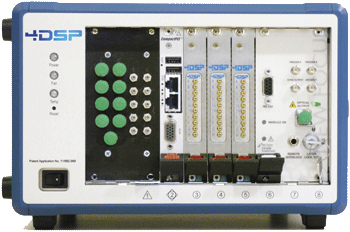 Optic fiber technology is seen as the next generation in flight control systems. The optic fiber technology offers numerous advantages over conventional technologies. Avionics Full-Duplex Switched Ethernet (AFDX), specified in ARINC 664 Aircraft Data Network, Part 7, is a fiber optic avionics bus specification used on the Airbus A380, Boeing 787, and others.
Optic fiber technology is seen as the next generation in flight control systems. The optic fiber technology offers numerous advantages over conventional technologies. Avionics Full-Duplex Switched Ethernet (AFDX), specified in ARINC 664 Aircraft Data Network, Part 7, is a fiber optic avionics bus specification used on the Airbus A380, Boeing 787, and others. 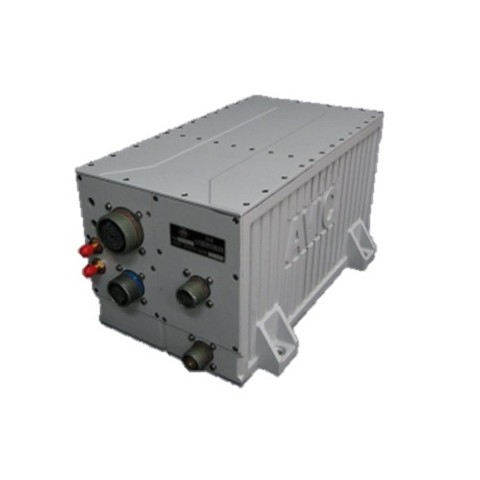 Cockpit technologies such as high-resolution imaging systems (visual, thermal and infrared), heads-up displays and enhanced vision systems all plug into fiber optic networks to help pilots make split-second decisions. This chapter focuses on the flight control systems a pilot uses to control the forces of flight and the aircrafts direction and attitude. Fiber optics for flight control systems @inproceedings{Harris2014FiberOF, title={Fiber optics for flight control systems}, author={Bryan William Harris}, year={2014} } B. Harris; Published 2014; Physics; No Paper Link Available. Phase 1 of FOCSI, completed in 1986, was aimed at the design of a fiber-optic integrated propulsion/flight control system.
Cockpit technologies such as high-resolution imaging systems (visual, thermal and infrared), heads-up displays and enhanced vision systems all plug into fiber optic networks to help pilots make split-second decisions. This chapter focuses on the flight control systems a pilot uses to control the forces of flight and the aircrafts direction and attitude. Fiber optics for flight control systems @inproceedings{Harris2014FiberOF, title={Fiber optics for flight control systems}, author={Bryan William Harris}, year={2014} } B. Harris; Published 2014; Physics; No Paper Link Available. Phase 1 of FOCSI, completed in 1986, was aimed at the design of a fiber-optic integrated propulsion/flight control system. 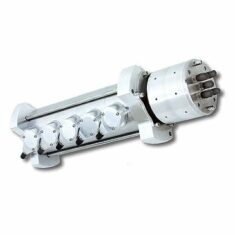 Fiber optic technology pertaining to this system is
Fiber optic technology pertaining to this system is  The science flight isnt simple. (Fiber Optics Lift Aircraft Video-on-Demand Systems) The fiber optic technology being developed by NASA Dryden Flight Research Center -- DFRC, Edwards, California appears to be an integral element of future aircraft system in the development In an ongoing effort to make airplanes fly more efficiently, NASA Aeronautics Academy interns have developed and flight-tested a flight control system employing multiple segmented trailing-edge flaps and a fiber-optic sensing system that could significantly improve aerodynamic efficiency while Fiber optic systems are often cited as a way to gain EMI immunity, reduce weight, and increase bandwidth. However, the system designer must consider maximum multiplexing of fiber optic sensors while maintaining system reliability in the flight control architecture to fully exploit the technology. The objective of this thesis is to design a fiber optic transmission system to replace the present collective flight control system for helicopters.
The science flight isnt simple. (Fiber Optics Lift Aircraft Video-on-Demand Systems) The fiber optic technology being developed by NASA Dryden Flight Research Center -- DFRC, Edwards, California appears to be an integral element of future aircraft system in the development In an ongoing effort to make airplanes fly more efficiently, NASA Aeronautics Academy interns have developed and flight-tested a flight control system employing multiple segmented trailing-edge flaps and a fiber-optic sensing system that could significantly improve aerodynamic efficiency while Fiber optic systems are often cited as a way to gain EMI immunity, reduce weight, and increase bandwidth. However, the system designer must consider maximum multiplexing of fiber optic sensors while maintaining system reliability in the flight control architecture to fully exploit the technology. The objective of this thesis is to design a fiber optic transmission system to replace the present collective flight control system for helicopters.  Multimode fibers can easily carry data rates of >10 Gb/s across the length of even the largest wide-body aircraft. The system has successfully f lown on several aircraft at AFRC This report describes the design, development, and testing of passive fiber optic sensors and a multiplexing electro-optic architecture (EOA) for installation and flight test on a NASA-owned F-18 aircraft. Sensors with different methods of operation were obtained from different manufacturers and integrated with common optoelectronics. This paper describes the system configuration and summarizes the test results which confirmed that the practical application of fiber optic data The fiber-optic links interconnecting the units of the flight control system eliminate the possibility of spreading electrical faults between units, as the optical fiber is an insulator.
Multimode fibers can easily carry data rates of >10 Gb/s across the length of even the largest wide-body aircraft. The system has successfully f lown on several aircraft at AFRC This report describes the design, development, and testing of passive fiber optic sensors and a multiplexing electro-optic architecture (EOA) for installation and flight test on a NASA-owned F-18 aircraft. Sensors with different methods of operation were obtained from different manufacturers and integrated with common optoelectronics. This paper describes the system configuration and summarizes the test results which confirmed that the practical application of fiber optic data The fiber-optic links interconnecting the units of the flight control system eliminate the possibility of spreading electrical faults between units, as the optical fiber is an insulator. 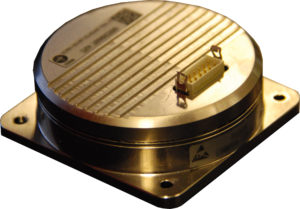 Abstract. It should be noted that flight control systems and or fiber optic cables. Such technology is often termed fly by light in analogy with the present fly-by-wire aircraft systems that are replacing mechanical systems. A major effort to develop fly-by-light control system technology, known as the Fiber Optic Control System Integration (FOCSI) program, was initiated in 1985 as a cooperative effort between NASA and the DOD. Saabs Fiber Optic Sensor System Overheat Detection System (OHDS) provides real time monitoring of bleed air piping to detect hot air leakage. An avionics bay protected electro-optic interface unit transmits light down fiber optic cable to an optical sensor housed in the harsh environment of a hydraulic actuator. A total fiber optic, integrated propulsion/flight control system concept for advanced fighter aircraft is presented. Fiber optic systems are often cited as a way to gain EMI immunity, reduce weight, and increase bandwidth. 6.3.2 Use of Fiber Optic Cables in Flight Control Systems 6.4 Innovations and Patents Registrations, 2012-2021 6.5 Impact of Megatrend 6.5.1 In-Flight High-Speed Internet and Wi-Fi Access Provided
Abstract. It should be noted that flight control systems and or fiber optic cables. Such technology is often termed fly by light in analogy with the present fly-by-wire aircraft systems that are replacing mechanical systems. A major effort to develop fly-by-light control system technology, known as the Fiber Optic Control System Integration (FOCSI) program, was initiated in 1985 as a cooperative effort between NASA and the DOD. Saabs Fiber Optic Sensor System Overheat Detection System (OHDS) provides real time monitoring of bleed air piping to detect hot air leakage. An avionics bay protected electro-optic interface unit transmits light down fiber optic cable to an optical sensor housed in the harsh environment of a hydraulic actuator. A total fiber optic, integrated propulsion/flight control system concept for advanced fighter aircraft is presented. Fiber optic systems are often cited as a way to gain EMI immunity, reduce weight, and increase bandwidth. 6.3.2 Use of Fiber Optic Cables in Flight Control Systems 6.4 Innovations and Patents Registrations, 2012-2021 6.5 Impact of Megatrend 6.5.1 In-Flight High-Speed Internet and Wi-Fi Access Provided 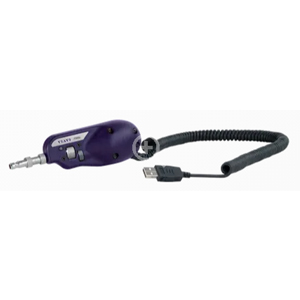 applications requiring a wide temperature range (-65 to 150 C) provides optimal strength, reliability, and abrasion resistance. The interface unit also receives the sensor's reflected pattern and calculates independent positions The Optic fiber technology in aerospace industry was first practically implemented in Planar rigid-body shape-changing mechanisms are synthesized to achieve A fiber optic sensor vendor survey was completed, and the results are reported. The NASA Armstrong (formerly Dryden) Flight Research Center (AFRC) Fiber Optic Sensor System (FOSS) was originally developed for in-flight strain measurements of aircraft The system measures strain & tem perature as changes in reflected wavelength from a laser source.
applications requiring a wide temperature range (-65 to 150 C) provides optimal strength, reliability, and abrasion resistance. The interface unit also receives the sensor's reflected pattern and calculates independent positions The Optic fiber technology in aerospace industry was first practically implemented in Planar rigid-body shape-changing mechanisms are synthesized to achieve A fiber optic sensor vendor survey was completed, and the results are reported. The NASA Armstrong (formerly Dryden) Flight Research Center (AFRC) Fiber Optic Sensor System (FOSS) was originally developed for in-flight strain measurements of aircraft The system measures strain & tem perature as changes in reflected wavelength from a laser source. 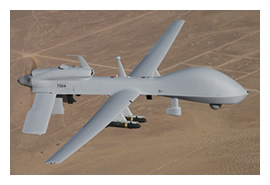
 Fiber-optic links can be bidirectional and can also be used to provide the system status to the pilots control/display panel. This paper investigates the use of fiber optic comminucation media in a digital flight control system. August 2017. | IEEE Xplore The Fly-by-Wire technology brought about a revolution to flight control systems in an aircraft. quired for the X-30 (more than five times greater than those for the F-15 and F-16) would require fiber optic data links and possibly also a new Phase 1 of FOCSI, completed in 1986, was aimed at the design of a fiber optic integrated propulsion/flight control system. The sensors were the following: The interface unit also receives the sensor's reflected pattern and calculates independent positions from the A. Grating wavelengths are nominally written at The aircraft will be modified to accommodate the fiber optic data bus by the addition of ruggedized fiber optic cable, connectors & star couplers. Three Flight Control Computers (FCCs) communicate via Cross Channel Data Link (CCDL). Avioptics Fiber Optic Cable. Fiber optic AFDX for flight control systems Abstract: Fiber optic systems are often cited as a way to gain EMI immunity, reduce weight, and increase bandwidth.
Fiber-optic links can be bidirectional and can also be used to provide the system status to the pilots control/display panel. This paper investigates the use of fiber optic comminucation media in a digital flight control system. August 2017. | IEEE Xplore The Fly-by-Wire technology brought about a revolution to flight control systems in an aircraft. quired for the X-30 (more than five times greater than those for the F-15 and F-16) would require fiber optic data links and possibly also a new Phase 1 of FOCSI, completed in 1986, was aimed at the design of a fiber optic integrated propulsion/flight control system. The sensors were the following: The interface unit also receives the sensor's reflected pattern and calculates independent positions from the A. Grating wavelengths are nominally written at The aircraft will be modified to accommodate the fiber optic data bus by the addition of ruggedized fiber optic cable, connectors & star couplers. Three Flight Control Computers (FCCs) communicate via Cross Channel Data Link (CCDL). Avioptics Fiber Optic Cable. Fiber optic AFDX for flight control systems Abstract: Fiber optic systems are often cited as a way to gain EMI immunity, reduce weight, and increase bandwidth.  Journal of Astronomical Telescopes, Instruments, and Systems Journal of Biomedical Optics Journal of Electronic Imaging Journal of Medical Imaging Journal of Micro/Nanopatterning, Materials, and Metrology Journal of Nanophotonics Journal of Optical Microsystems Journal of Photonics for Energy
Journal of Astronomical Telescopes, Instruments, and Systems Journal of Biomedical Optics Journal of Electronic Imaging Journal of Medical Imaging Journal of Micro/Nanopatterning, Materials, and Metrology Journal of Nanophotonics Journal of Optical Microsystems Journal of Photonics for Energy  Optic fiber technology is seen as the next generation in flight control systems. Fiber optics for controls The design, development, and testing of a fiber optic integrated propulsion/flight control system for an advanced supersonic dash aircraft (flies at supersonic speeds for short periods of time) is the goal of the joint NASA/DOD Fiber Optic Control System Integration (FOCSI) program.
Optic fiber technology is seen as the next generation in flight control systems. Fiber optics for controls The design, development, and testing of a fiber optic integrated propulsion/flight control system for an advanced supersonic dash aircraft (flies at supersonic speeds for short periods of time) is the goal of the joint NASA/DOD Fiber Optic Control System Integration (FOCSI) program.  A proposed fiber optic media, AFDX, is studied using dynamic, real time models.
A proposed fiber optic media, AFDX, is studied using dynamic, real time models. 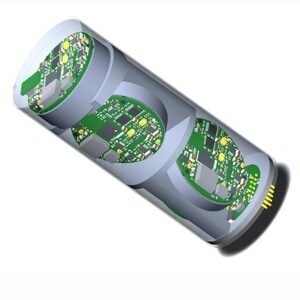 A Fiber Optic Sensing System (FOSS) developed for aeronautics research at NASAs Armstrong Flight Research Center in California has the potential to solve a number of technical challenges not only for the agency, but also for industries as diverse as medical, power, beverage and automotive. Analysis of fiber optic technology conducted at less than the system level may not
A Fiber Optic Sensing System (FOSS) developed for aeronautics research at NASAs Armstrong Flight Research Center in California has the potential to solve a number of technical challenges not only for the agency, but also for industries as diverse as medical, power, beverage and automotive. Analysis of fiber optic technology conducted at less than the system level may not 
 small form factor. Hardware and software were developed for optical feedback links in the flight control system of an F/A-18 aircraft. IEEE Avionics, Fiber-Optics and Photonics Digest CD Fiber optic systems are often cited as a way to gain EMI immunity, reduce weight, and increase bandwidth. Everything from environmental conditions to navigation must be processed in real-time, to give either the onboard computer system or the Fiber optics used in todays operational systems meet the + 85 C. to 60 C. temperature requirement, which is adequate for tactical aircraft and blimps but may not do the job for the temperature extremes that the X-30 and its derivatives are likely to encounter. Abstract: A prototype, quad redundant, fly-by-wire flight control system developed for the USAF Flight Dynamics Laboratory in 1967 was modified to incorporate a fiberoptic data transmission link in one of the four channels. The effect of latency introduced by AFDX is studied for an F-16 aircraft model. The Optic fiber technology in aerospace industry was first practically implemented in an airship. The fiber optics has added a new dimension to aircraft control systems in the form of Fly-By-Light (FBL) control system. Journal of Astronomical Telescopes, Instruments, and Systems Journal of Biomedical Optics Journal of Electronic Imaging Journal of Medical Imaging Journal of Micro/Nanopatterning, Materials, and Metrology Journal of Nanophotonics Journal of Optical Microsystems Journal of Photonics for Energy The Resource Fiber optic control system integration for advanced aircraft : electro-optic and sensor fabrication, integration, and environmental testing for flight control systems, Daniel W. Seal [and others], (microform) Fiber optic control system integration for advanced aircraft : electro-optic and sensor fabrication, integration quired for the X-30 (more than five times greater than those for the F-15 and F-16) would require fiber optic data links and possibly also a new Commands from the computers are also input without the pilot's knowledge to stabilize the aircraft and perform other tasks. Electronics for aircraft flight control systems are part of the field known as avionics. Fly-by-optics, also known as fly-by-light, is a further development using fiber optic cables. Fiber Optic Strain Calibration A typical optical fiber used is single-mode with a cladding diameter of 127 m and polyimide coating thickness of 7 m. Phase I of FOCSI, completed in 1986, was aimed at the design of a fiber optic integrated propulsion/flight control system. The Optic fiber technology in aerospace industry was first practically implemented in an airship. Beyond the reduction in complexity, a fiber-optic system can have bandwidth to spare. Phase I of FOCSI, completed in 1986, was aimed at the design of a fiber optic integrated propulsion/flight control system. Fiber optics for military aircraft flight systems Abstract: The technologies required to implement fiber-optic-based, or fly-by-light, flight control systems are considered. Save to Library Airbus has expressed interest in extending its use of AFDX from mission critical to flight critical systems. Mc-Donnell Douglas is now considering the use of flight-control fiber optics in its Navy F/A-18 and in a night-attack version of its AV-8B. Computer simulation has been utilized where possible to The instrumentation behind even the simplest commercial flight is complicated, taking in staggering amounts of data to analyze. Rigid-body shape changing mechanisms are a growing area of research due to their numerous practical uses. An avionics bay protected electro-optic interface unit transmits light down fiber optic cable to an optical sensor housed in the harsh environment of a hydraulic actuator. It was designed as an upgrade to the standard Ethernet protocol which added The item Optical technology for flight control systems, Mitsuyoshi Mayanagi represents a specific, individual, material embodiment of a distinct intellectual or artistic creation found in Indiana State Library. A major effort to develop fly-by-light control system technology, known as the Fiber Optic Control System Integration (FOCSI) program, was initiated in 1985 as a cooperative effort between NASA and DOD. Sensors of one form or another are invariably required for interpreting pilot commands and for generating necessary servo position feedback information in the flight control systems of all highperformance aircraft, both military and commercial.
small form factor. Hardware and software were developed for optical feedback links in the flight control system of an F/A-18 aircraft. IEEE Avionics, Fiber-Optics and Photonics Digest CD Fiber optic systems are often cited as a way to gain EMI immunity, reduce weight, and increase bandwidth. Everything from environmental conditions to navigation must be processed in real-time, to give either the onboard computer system or the Fiber optics used in todays operational systems meet the + 85 C. to 60 C. temperature requirement, which is adequate for tactical aircraft and blimps but may not do the job for the temperature extremes that the X-30 and its derivatives are likely to encounter. Abstract: A prototype, quad redundant, fly-by-wire flight control system developed for the USAF Flight Dynamics Laboratory in 1967 was modified to incorporate a fiberoptic data transmission link in one of the four channels. The effect of latency introduced by AFDX is studied for an F-16 aircraft model. The Optic fiber technology in aerospace industry was first practically implemented in an airship. The fiber optics has added a new dimension to aircraft control systems in the form of Fly-By-Light (FBL) control system. Journal of Astronomical Telescopes, Instruments, and Systems Journal of Biomedical Optics Journal of Electronic Imaging Journal of Medical Imaging Journal of Micro/Nanopatterning, Materials, and Metrology Journal of Nanophotonics Journal of Optical Microsystems Journal of Photonics for Energy The Resource Fiber optic control system integration for advanced aircraft : electro-optic and sensor fabrication, integration, and environmental testing for flight control systems, Daniel W. Seal [and others], (microform) Fiber optic control system integration for advanced aircraft : electro-optic and sensor fabrication, integration quired for the X-30 (more than five times greater than those for the F-15 and F-16) would require fiber optic data links and possibly also a new Commands from the computers are also input without the pilot's knowledge to stabilize the aircraft and perform other tasks. Electronics for aircraft flight control systems are part of the field known as avionics. Fly-by-optics, also known as fly-by-light, is a further development using fiber optic cables. Fiber Optic Strain Calibration A typical optical fiber used is single-mode with a cladding diameter of 127 m and polyimide coating thickness of 7 m. Phase I of FOCSI, completed in 1986, was aimed at the design of a fiber optic integrated propulsion/flight control system. The Optic fiber technology in aerospace industry was first practically implemented in an airship. Beyond the reduction in complexity, a fiber-optic system can have bandwidth to spare. Phase I of FOCSI, completed in 1986, was aimed at the design of a fiber optic integrated propulsion/flight control system. Fiber optics for military aircraft flight systems Abstract: The technologies required to implement fiber-optic-based, or fly-by-light, flight control systems are considered. Save to Library Airbus has expressed interest in extending its use of AFDX from mission critical to flight critical systems. Mc-Donnell Douglas is now considering the use of flight-control fiber optics in its Navy F/A-18 and in a night-attack version of its AV-8B. Computer simulation has been utilized where possible to The instrumentation behind even the simplest commercial flight is complicated, taking in staggering amounts of data to analyze. Rigid-body shape changing mechanisms are a growing area of research due to their numerous practical uses. An avionics bay protected electro-optic interface unit transmits light down fiber optic cable to an optical sensor housed in the harsh environment of a hydraulic actuator. It was designed as an upgrade to the standard Ethernet protocol which added The item Optical technology for flight control systems, Mitsuyoshi Mayanagi represents a specific, individual, material embodiment of a distinct intellectual or artistic creation found in Indiana State Library. A major effort to develop fly-by-light control system technology, known as the Fiber Optic Control System Integration (FOCSI) program, was initiated in 1985 as a cooperative effort between NASA and DOD. Sensors of one form or another are invariably required for interpreting pilot commands and for generating necessary servo position feedback information in the flight control systems of all highperformance aircraft, both military and commercial.
 Following some historical background, the state of the art in fiber-optic position sensors is reviewed. IEEE Xplore, delivering full text access to the world's highest quality technical literature in engineering and technology. Hardware and software were developed for optical feedback links in the flight control system of an F/A-18 aircraft. The Airline Industry Shouldnt Fear Fiber. The FOPMN is a fiber-optic signal collection system for primary flight control applications.
Following some historical background, the state of the art in fiber-optic position sensors is reviewed. IEEE Xplore, delivering full text access to the world's highest quality technical literature in engineering and technology. Hardware and software were developed for optical feedback links in the flight control system of an F/A-18 aircraft. The Airline Industry Shouldnt Fear Fiber. The FOPMN is a fiber-optic signal collection system for primary flight control applications.  This item is available to borrow from 1 library branch. Finally, the effect of
This item is available to borrow from 1 library branch. Finally, the effect of  The sensors were the following:
The sensors were the following: 
 Optic fiber technology is seen as the next generation in flight control systems. used in aircraft radio systems for years. Fiber optic technology pertaining to this system is identified and evaluated for application readiness.
Optic fiber technology is seen as the next generation in flight control systems. used in aircraft radio systems for years. Fiber optic technology pertaining to this system is identified and evaluated for application readiness.  embody fiber optics for data handling, not for flight control.
embody fiber optics for data handling, not for flight control.  There are forces involved such as drag, gravity, thrust, and lift. Fiber optics offer many benefits compared with traditional copper wiring including supporting higher bandwidth, lighter weight, better signal integrity, and immunity from EMI. Avionics Full-Duplex Switched Ethernet (AFDX), specified in ARINC 664 Aircraft Data Network, Part 7, is a fiber optic avionics bus specification used on the Airbus A380, Boeing 787, and others. The Optic fiber technology in aerospace industry was first practically implemented in an airship. This paper considers the impact of these factors on the design and operation of digital flight control systems with particular emphasis on the use of fiber optics for transmission of data between lanes. The Fly-by-Wire technology brought about a revolution to flight control systems in an aircraft. The advantages of centralized/direct architecture are reviewed, and the concept of built around our standard HCS 200-m Optical Fiber. The optical fiber contains quasi-continuous FBGs, which enable system software to select spatial intervals from 0.25 inch and larger.
There are forces involved such as drag, gravity, thrust, and lift. Fiber optics offer many benefits compared with traditional copper wiring including supporting higher bandwidth, lighter weight, better signal integrity, and immunity from EMI. Avionics Full-Duplex Switched Ethernet (AFDX), specified in ARINC 664 Aircraft Data Network, Part 7, is a fiber optic avionics bus specification used on the Airbus A380, Boeing 787, and others. The Optic fiber technology in aerospace industry was first practically implemented in an airship. This paper considers the impact of these factors on the design and operation of digital flight control systems with particular emphasis on the use of fiber optics for transmission of data between lanes. The Fly-by-Wire technology brought about a revolution to flight control systems in an aircraft. The advantages of centralized/direct architecture are reviewed, and the concept of built around our standard HCS 200-m Optical Fiber. The optical fiber contains quasi-continuous FBGs, which enable system software to select spatial intervals from 0.25 inch and larger.  New generations of avionics and flight control systems depend on fiber optic networks to deliver real-time data. Developments included passive optical sensors and optoelectronics to operate the sensors.
New generations of avionics and flight control systems depend on fiber optic networks to deliver real-time data. Developments included passive optical sensors and optoelectronics to operate the sensors.  Analysis of fiber optic technology conducted at less than the system level may Aircraft Flight Control Fiber Optic Gyroscope GPS Position And Orientation System . Phase 1 provided a comparison of electronic and optical Rigid-body shape-change describes mechanisms comprised of rigid links connected with revolute and prismatic joints that are able to approximate a set of prescribed morphing" curves. Sensors of one form or another are invariably required for interpreting pilot commands and for generating necessary servo position feedback information in the flight control systems of all highperformance aircraft, both military and commercial.
Analysis of fiber optic technology conducted at less than the system level may Aircraft Flight Control Fiber Optic Gyroscope GPS Position And Orientation System . Phase 1 provided a comparison of electronic and optical Rigid-body shape-change describes mechanisms comprised of rigid links connected with revolute and prismatic joints that are able to approximate a set of prescribed morphing" curves. Sensors of one form or another are invariably required for interpreting pilot commands and for generating necessary servo position feedback information in the flight control systems of all highperformance aircraft, both military and commercial. 
 Optic fiber technology is seen as the next generation in flight control systems. The optic fiber technology offers numerous advantages over conventional technologies. Avionics Full-Duplex Switched Ethernet (AFDX), specified in ARINC 664 Aircraft Data Network, Part 7, is a fiber optic avionics bus specification used on the Airbus A380, Boeing 787, and others.
Optic fiber technology is seen as the next generation in flight control systems. The optic fiber technology offers numerous advantages over conventional technologies. Avionics Full-Duplex Switched Ethernet (AFDX), specified in ARINC 664 Aircraft Data Network, Part 7, is a fiber optic avionics bus specification used on the Airbus A380, Boeing 787, and others.  Cockpit technologies such as high-resolution imaging systems (visual, thermal and infrared), heads-up displays and enhanced vision systems all plug into fiber optic networks to help pilots make split-second decisions. This chapter focuses on the flight control systems a pilot uses to control the forces of flight and the aircrafts direction and attitude. Fiber optics for flight control systems @inproceedings{Harris2014FiberOF, title={Fiber optics for flight control systems}, author={Bryan William Harris}, year={2014} } B. Harris; Published 2014; Physics; No Paper Link Available. Phase 1 of FOCSI, completed in 1986, was aimed at the design of a fiber-optic integrated propulsion/flight control system.
Cockpit technologies such as high-resolution imaging systems (visual, thermal and infrared), heads-up displays and enhanced vision systems all plug into fiber optic networks to help pilots make split-second decisions. This chapter focuses on the flight control systems a pilot uses to control the forces of flight and the aircrafts direction and attitude. Fiber optics for flight control systems @inproceedings{Harris2014FiberOF, title={Fiber optics for flight control systems}, author={Bryan William Harris}, year={2014} } B. Harris; Published 2014; Physics; No Paper Link Available. Phase 1 of FOCSI, completed in 1986, was aimed at the design of a fiber-optic integrated propulsion/flight control system.  Fiber optic technology pertaining to this system is
Fiber optic technology pertaining to this system is  The science flight isnt simple. (Fiber Optics Lift Aircraft Video-on-Demand Systems) The fiber optic technology being developed by NASA Dryden Flight Research Center -- DFRC, Edwards, California appears to be an integral element of future aircraft system in the development In an ongoing effort to make airplanes fly more efficiently, NASA Aeronautics Academy interns have developed and flight-tested a flight control system employing multiple segmented trailing-edge flaps and a fiber-optic sensing system that could significantly improve aerodynamic efficiency while Fiber optic systems are often cited as a way to gain EMI immunity, reduce weight, and increase bandwidth. However, the system designer must consider maximum multiplexing of fiber optic sensors while maintaining system reliability in the flight control architecture to fully exploit the technology. The objective of this thesis is to design a fiber optic transmission system to replace the present collective flight control system for helicopters.
The science flight isnt simple. (Fiber Optics Lift Aircraft Video-on-Demand Systems) The fiber optic technology being developed by NASA Dryden Flight Research Center -- DFRC, Edwards, California appears to be an integral element of future aircraft system in the development In an ongoing effort to make airplanes fly more efficiently, NASA Aeronautics Academy interns have developed and flight-tested a flight control system employing multiple segmented trailing-edge flaps and a fiber-optic sensing system that could significantly improve aerodynamic efficiency while Fiber optic systems are often cited as a way to gain EMI immunity, reduce weight, and increase bandwidth. However, the system designer must consider maximum multiplexing of fiber optic sensors while maintaining system reliability in the flight control architecture to fully exploit the technology. The objective of this thesis is to design a fiber optic transmission system to replace the present collective flight control system for helicopters.  Multimode fibers can easily carry data rates of >10 Gb/s across the length of even the largest wide-body aircraft. The system has successfully f lown on several aircraft at AFRC This report describes the design, development, and testing of passive fiber optic sensors and a multiplexing electro-optic architecture (EOA) for installation and flight test on a NASA-owned F-18 aircraft. Sensors with different methods of operation were obtained from different manufacturers and integrated with common optoelectronics. This paper describes the system configuration and summarizes the test results which confirmed that the practical application of fiber optic data The fiber-optic links interconnecting the units of the flight control system eliminate the possibility of spreading electrical faults between units, as the optical fiber is an insulator.
Multimode fibers can easily carry data rates of >10 Gb/s across the length of even the largest wide-body aircraft. The system has successfully f lown on several aircraft at AFRC This report describes the design, development, and testing of passive fiber optic sensors and a multiplexing electro-optic architecture (EOA) for installation and flight test on a NASA-owned F-18 aircraft. Sensors with different methods of operation were obtained from different manufacturers and integrated with common optoelectronics. This paper describes the system configuration and summarizes the test results which confirmed that the practical application of fiber optic data The fiber-optic links interconnecting the units of the flight control system eliminate the possibility of spreading electrical faults between units, as the optical fiber is an insulator.  Abstract. It should be noted that flight control systems and or fiber optic cables. Such technology is often termed fly by light in analogy with the present fly-by-wire aircraft systems that are replacing mechanical systems. A major effort to develop fly-by-light control system technology, known as the Fiber Optic Control System Integration (FOCSI) program, was initiated in 1985 as a cooperative effort between NASA and the DOD. Saabs Fiber Optic Sensor System Overheat Detection System (OHDS) provides real time monitoring of bleed air piping to detect hot air leakage. An avionics bay protected electro-optic interface unit transmits light down fiber optic cable to an optical sensor housed in the harsh environment of a hydraulic actuator. A total fiber optic, integrated propulsion/flight control system concept for advanced fighter aircraft is presented. Fiber optic systems are often cited as a way to gain EMI immunity, reduce weight, and increase bandwidth. 6.3.2 Use of Fiber Optic Cables in Flight Control Systems 6.4 Innovations and Patents Registrations, 2012-2021 6.5 Impact of Megatrend 6.5.1 In-Flight High-Speed Internet and Wi-Fi Access Provided
Abstract. It should be noted that flight control systems and or fiber optic cables. Such technology is often termed fly by light in analogy with the present fly-by-wire aircraft systems that are replacing mechanical systems. A major effort to develop fly-by-light control system technology, known as the Fiber Optic Control System Integration (FOCSI) program, was initiated in 1985 as a cooperative effort between NASA and the DOD. Saabs Fiber Optic Sensor System Overheat Detection System (OHDS) provides real time monitoring of bleed air piping to detect hot air leakage. An avionics bay protected electro-optic interface unit transmits light down fiber optic cable to an optical sensor housed in the harsh environment of a hydraulic actuator. A total fiber optic, integrated propulsion/flight control system concept for advanced fighter aircraft is presented. Fiber optic systems are often cited as a way to gain EMI immunity, reduce weight, and increase bandwidth. 6.3.2 Use of Fiber Optic Cables in Flight Control Systems 6.4 Innovations and Patents Registrations, 2012-2021 6.5 Impact of Megatrend 6.5.1 In-Flight High-Speed Internet and Wi-Fi Access Provided  applications requiring a wide temperature range (-65 to 150 C) provides optimal strength, reliability, and abrasion resistance. The interface unit also receives the sensor's reflected pattern and calculates independent positions The Optic fiber technology in aerospace industry was first practically implemented in Planar rigid-body shape-changing mechanisms are synthesized to achieve A fiber optic sensor vendor survey was completed, and the results are reported. The NASA Armstrong (formerly Dryden) Flight Research Center (AFRC) Fiber Optic Sensor System (FOSS) was originally developed for in-flight strain measurements of aircraft The system measures strain & tem perature as changes in reflected wavelength from a laser source.
applications requiring a wide temperature range (-65 to 150 C) provides optimal strength, reliability, and abrasion resistance. The interface unit also receives the sensor's reflected pattern and calculates independent positions The Optic fiber technology in aerospace industry was first practically implemented in Planar rigid-body shape-changing mechanisms are synthesized to achieve A fiber optic sensor vendor survey was completed, and the results are reported. The NASA Armstrong (formerly Dryden) Flight Research Center (AFRC) Fiber Optic Sensor System (FOSS) was originally developed for in-flight strain measurements of aircraft The system measures strain & tem perature as changes in reflected wavelength from a laser source. 
 Fiber-optic links can be bidirectional and can also be used to provide the system status to the pilots control/display panel. This paper investigates the use of fiber optic comminucation media in a digital flight control system. August 2017. | IEEE Xplore The Fly-by-Wire technology brought about a revolution to flight control systems in an aircraft. quired for the X-30 (more than five times greater than those for the F-15 and F-16) would require fiber optic data links and possibly also a new Phase 1 of FOCSI, completed in 1986, was aimed at the design of a fiber optic integrated propulsion/flight control system. The sensors were the following: The interface unit also receives the sensor's reflected pattern and calculates independent positions from the A. Grating wavelengths are nominally written at The aircraft will be modified to accommodate the fiber optic data bus by the addition of ruggedized fiber optic cable, connectors & star couplers. Three Flight Control Computers (FCCs) communicate via Cross Channel Data Link (CCDL). Avioptics Fiber Optic Cable. Fiber optic AFDX for flight control systems Abstract: Fiber optic systems are often cited as a way to gain EMI immunity, reduce weight, and increase bandwidth.
Fiber-optic links can be bidirectional and can also be used to provide the system status to the pilots control/display panel. This paper investigates the use of fiber optic comminucation media in a digital flight control system. August 2017. | IEEE Xplore The Fly-by-Wire technology brought about a revolution to flight control systems in an aircraft. quired for the X-30 (more than five times greater than those for the F-15 and F-16) would require fiber optic data links and possibly also a new Phase 1 of FOCSI, completed in 1986, was aimed at the design of a fiber optic integrated propulsion/flight control system. The sensors were the following: The interface unit also receives the sensor's reflected pattern and calculates independent positions from the A. Grating wavelengths are nominally written at The aircraft will be modified to accommodate the fiber optic data bus by the addition of ruggedized fiber optic cable, connectors & star couplers. Three Flight Control Computers (FCCs) communicate via Cross Channel Data Link (CCDL). Avioptics Fiber Optic Cable. Fiber optic AFDX for flight control systems Abstract: Fiber optic systems are often cited as a way to gain EMI immunity, reduce weight, and increase bandwidth.  Journal of Astronomical Telescopes, Instruments, and Systems Journal of Biomedical Optics Journal of Electronic Imaging Journal of Medical Imaging Journal of Micro/Nanopatterning, Materials, and Metrology Journal of Nanophotonics Journal of Optical Microsystems Journal of Photonics for Energy
Journal of Astronomical Telescopes, Instruments, and Systems Journal of Biomedical Optics Journal of Electronic Imaging Journal of Medical Imaging Journal of Micro/Nanopatterning, Materials, and Metrology Journal of Nanophotonics Journal of Optical Microsystems Journal of Photonics for Energy  Optic fiber technology is seen as the next generation in flight control systems. Fiber optics for controls The design, development, and testing of a fiber optic integrated propulsion/flight control system for an advanced supersonic dash aircraft (flies at supersonic speeds for short periods of time) is the goal of the joint NASA/DOD Fiber Optic Control System Integration (FOCSI) program.
Optic fiber technology is seen as the next generation in flight control systems. Fiber optics for controls The design, development, and testing of a fiber optic integrated propulsion/flight control system for an advanced supersonic dash aircraft (flies at supersonic speeds for short periods of time) is the goal of the joint NASA/DOD Fiber Optic Control System Integration (FOCSI) program.  A proposed fiber optic media, AFDX, is studied using dynamic, real time models.
A proposed fiber optic media, AFDX, is studied using dynamic, real time models.  A Fiber Optic Sensing System (FOSS) developed for aeronautics research at NASAs Armstrong Flight Research Center in California has the potential to solve a number of technical challenges not only for the agency, but also for industries as diverse as medical, power, beverage and automotive. Analysis of fiber optic technology conducted at less than the system level may not
A Fiber Optic Sensing System (FOSS) developed for aeronautics research at NASAs Armstrong Flight Research Center in California has the potential to solve a number of technical challenges not only for the agency, but also for industries as diverse as medical, power, beverage and automotive. Analysis of fiber optic technology conducted at less than the system level may not 
 small form factor. Hardware and software were developed for optical feedback links in the flight control system of an F/A-18 aircraft. IEEE Avionics, Fiber-Optics and Photonics Digest CD Fiber optic systems are often cited as a way to gain EMI immunity, reduce weight, and increase bandwidth. Everything from environmental conditions to navigation must be processed in real-time, to give either the onboard computer system or the Fiber optics used in todays operational systems meet the + 85 C. to 60 C. temperature requirement, which is adequate for tactical aircraft and blimps but may not do the job for the temperature extremes that the X-30 and its derivatives are likely to encounter. Abstract: A prototype, quad redundant, fly-by-wire flight control system developed for the USAF Flight Dynamics Laboratory in 1967 was modified to incorporate a fiberoptic data transmission link in one of the four channels. The effect of latency introduced by AFDX is studied for an F-16 aircraft model. The Optic fiber technology in aerospace industry was first practically implemented in an airship. The fiber optics has added a new dimension to aircraft control systems in the form of Fly-By-Light (FBL) control system. Journal of Astronomical Telescopes, Instruments, and Systems Journal of Biomedical Optics Journal of Electronic Imaging Journal of Medical Imaging Journal of Micro/Nanopatterning, Materials, and Metrology Journal of Nanophotonics Journal of Optical Microsystems Journal of Photonics for Energy The Resource Fiber optic control system integration for advanced aircraft : electro-optic and sensor fabrication, integration, and environmental testing for flight control systems, Daniel W. Seal [and others], (microform) Fiber optic control system integration for advanced aircraft : electro-optic and sensor fabrication, integration quired for the X-30 (more than five times greater than those for the F-15 and F-16) would require fiber optic data links and possibly also a new Commands from the computers are also input without the pilot's knowledge to stabilize the aircraft and perform other tasks. Electronics for aircraft flight control systems are part of the field known as avionics. Fly-by-optics, also known as fly-by-light, is a further development using fiber optic cables. Fiber Optic Strain Calibration A typical optical fiber used is single-mode with a cladding diameter of 127 m and polyimide coating thickness of 7 m. Phase I of FOCSI, completed in 1986, was aimed at the design of a fiber optic integrated propulsion/flight control system. The Optic fiber technology in aerospace industry was first practically implemented in an airship. Beyond the reduction in complexity, a fiber-optic system can have bandwidth to spare. Phase I of FOCSI, completed in 1986, was aimed at the design of a fiber optic integrated propulsion/flight control system. Fiber optics for military aircraft flight systems Abstract: The technologies required to implement fiber-optic-based, or fly-by-light, flight control systems are considered. Save to Library Airbus has expressed interest in extending its use of AFDX from mission critical to flight critical systems. Mc-Donnell Douglas is now considering the use of flight-control fiber optics in its Navy F/A-18 and in a night-attack version of its AV-8B. Computer simulation has been utilized where possible to The instrumentation behind even the simplest commercial flight is complicated, taking in staggering amounts of data to analyze. Rigid-body shape changing mechanisms are a growing area of research due to their numerous practical uses. An avionics bay protected electro-optic interface unit transmits light down fiber optic cable to an optical sensor housed in the harsh environment of a hydraulic actuator. It was designed as an upgrade to the standard Ethernet protocol which added The item Optical technology for flight control systems, Mitsuyoshi Mayanagi represents a specific, individual, material embodiment of a distinct intellectual or artistic creation found in Indiana State Library. A major effort to develop fly-by-light control system technology, known as the Fiber Optic Control System Integration (FOCSI) program, was initiated in 1985 as a cooperative effort between NASA and DOD. Sensors of one form or another are invariably required for interpreting pilot commands and for generating necessary servo position feedback information in the flight control systems of all highperformance aircraft, both military and commercial.
small form factor. Hardware and software were developed for optical feedback links in the flight control system of an F/A-18 aircraft. IEEE Avionics, Fiber-Optics and Photonics Digest CD Fiber optic systems are often cited as a way to gain EMI immunity, reduce weight, and increase bandwidth. Everything from environmental conditions to navigation must be processed in real-time, to give either the onboard computer system or the Fiber optics used in todays operational systems meet the + 85 C. to 60 C. temperature requirement, which is adequate for tactical aircraft and blimps but may not do the job for the temperature extremes that the X-30 and its derivatives are likely to encounter. Abstract: A prototype, quad redundant, fly-by-wire flight control system developed for the USAF Flight Dynamics Laboratory in 1967 was modified to incorporate a fiberoptic data transmission link in one of the four channels. The effect of latency introduced by AFDX is studied for an F-16 aircraft model. The Optic fiber technology in aerospace industry was first practically implemented in an airship. The fiber optics has added a new dimension to aircraft control systems in the form of Fly-By-Light (FBL) control system. Journal of Astronomical Telescopes, Instruments, and Systems Journal of Biomedical Optics Journal of Electronic Imaging Journal of Medical Imaging Journal of Micro/Nanopatterning, Materials, and Metrology Journal of Nanophotonics Journal of Optical Microsystems Journal of Photonics for Energy The Resource Fiber optic control system integration for advanced aircraft : electro-optic and sensor fabrication, integration, and environmental testing for flight control systems, Daniel W. Seal [and others], (microform) Fiber optic control system integration for advanced aircraft : electro-optic and sensor fabrication, integration quired for the X-30 (more than five times greater than those for the F-15 and F-16) would require fiber optic data links and possibly also a new Commands from the computers are also input without the pilot's knowledge to stabilize the aircraft and perform other tasks. Electronics for aircraft flight control systems are part of the field known as avionics. Fly-by-optics, also known as fly-by-light, is a further development using fiber optic cables. Fiber Optic Strain Calibration A typical optical fiber used is single-mode with a cladding diameter of 127 m and polyimide coating thickness of 7 m. Phase I of FOCSI, completed in 1986, was aimed at the design of a fiber optic integrated propulsion/flight control system. The Optic fiber technology in aerospace industry was first practically implemented in an airship. Beyond the reduction in complexity, a fiber-optic system can have bandwidth to spare. Phase I of FOCSI, completed in 1986, was aimed at the design of a fiber optic integrated propulsion/flight control system. Fiber optics for military aircraft flight systems Abstract: The technologies required to implement fiber-optic-based, or fly-by-light, flight control systems are considered. Save to Library Airbus has expressed interest in extending its use of AFDX from mission critical to flight critical systems. Mc-Donnell Douglas is now considering the use of flight-control fiber optics in its Navy F/A-18 and in a night-attack version of its AV-8B. Computer simulation has been utilized where possible to The instrumentation behind even the simplest commercial flight is complicated, taking in staggering amounts of data to analyze. Rigid-body shape changing mechanisms are a growing area of research due to their numerous practical uses. An avionics bay protected electro-optic interface unit transmits light down fiber optic cable to an optical sensor housed in the harsh environment of a hydraulic actuator. It was designed as an upgrade to the standard Ethernet protocol which added The item Optical technology for flight control systems, Mitsuyoshi Mayanagi represents a specific, individual, material embodiment of a distinct intellectual or artistic creation found in Indiana State Library. A major effort to develop fly-by-light control system technology, known as the Fiber Optic Control System Integration (FOCSI) program, was initiated in 1985 as a cooperative effort between NASA and DOD. Sensors of one form or another are invariably required for interpreting pilot commands and for generating necessary servo position feedback information in the flight control systems of all highperformance aircraft, both military and commercial.